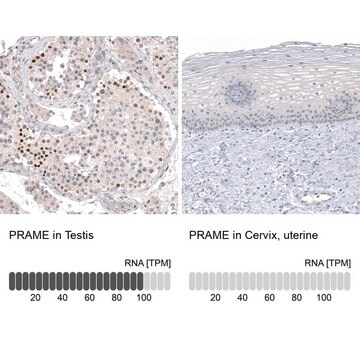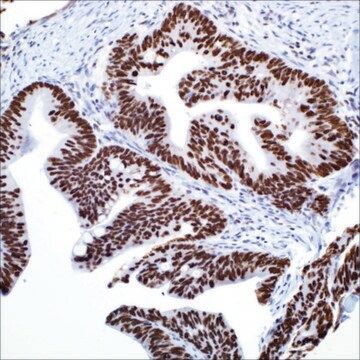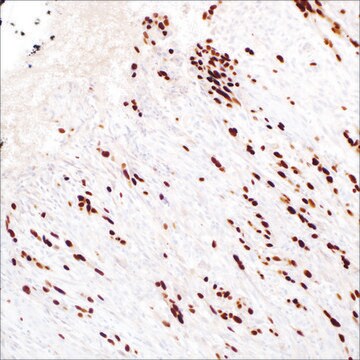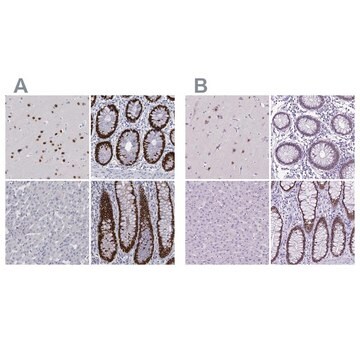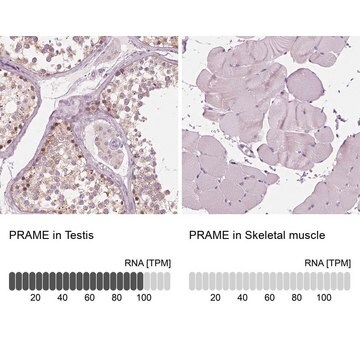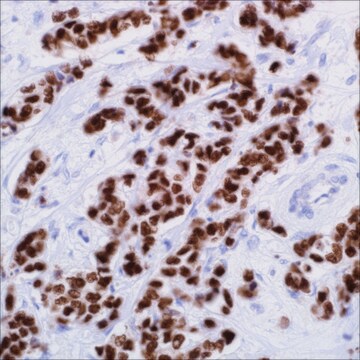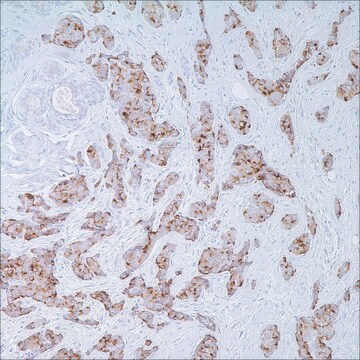484R-1
PRAME (EP461) Rabbit Monoclonal Primary Antibody
Synonym(e):
Preferentially-expressed Antigen in Melanoma
About This Item
Empfohlene Produkte
Biologische Quelle
rabbit
Qualitätsniveau
100
500
Konjugat
unconjugated
Antikörperform
culture supernatant
Antikörper-Produkttyp
primary antibodies
Klon
EP461, monoclonal
Beschreibung
For In Vitro Diagnostic Use in Select Regions
Form
buffered aqueous solution
Speziesreaktivität
human
Verpackung
vial of 0.1 mL concentrate (484R-14)
vial of 0.1 mL concentrate Research Use Only (484R-14-RUO)
vial of 0.5 mL concentrate (484R-15)
vial of 1.0 mL concentrate (484R-16)
vial of 1.0 mL concentrate Research Use Only (484R-16-RUO)
vial of 1.0 mL pre-dilute Research Use Only (484R-17-RUO)
vial of 1.0 mL pre-dilute ready-to-use (484R-17)
vial of 25.0 mL pre-dilute ready-to-use Research Use Only (484R-10-RUO)
vial of 25.0 mL pre-dilute ready-to-use (484R-10)
vial of 7.0 mL pre-dilute ready-to-use (484R-18)
vial of 7.0 mL pre-dilute ready-to-use Research Use Only (484R-18-RUO)
Methode(n)
immunohistochemistry (formalin-fixed, paraffin-embedded sections): 1:25-1:50 (concentrated)
Isotyp
IgG
Kontrolle
melanoma
Versandbedingung
wet ice
Lagertemp.
2-8°C
Visualisierung
nuclear
Verwandte Kategorien
Allgemeine Beschreibung
Qualität
- United States - IVD
- Canada - RUO
- European Union - IVD
- Japan - RUO
Physikalische Form
Angaben zur Herstellung
Note: This requires a keycode which can be found on your packaging or product label.
Sonstige Hinweise
Sie haben nicht das passende Produkt gefunden?
Probieren Sie unser Produkt-Auswahlhilfe. aus.
Lagerklassenschlüssel
12 - Non Combustible Liquids
WGK
WGK 2
Flammpunkt (°F)
Not applicable
Flammpunkt (°C)
Not applicable
Hier finden Sie alle aktuellen Versionen:
Analysenzertifikate (COA)
Leider sind derzeit keine COAs für dieses Produkt online verfügbar.
Wenn Sie Hilfe benötigen, wenden Sie sich bitte an Kundensupport
Besitzen Sie dieses Produkt bereits?
In der Dokumentenbibliothek finden Sie die Dokumentation zu den Produkten, die Sie kürzlich erworben haben.
Unser Team von Wissenschaftlern verfügt über Erfahrung in allen Forschungsbereichen einschließlich Life Science, Materialwissenschaften, chemischer Synthese, Chromatographie, Analytik und vielen mehr..
Setzen Sie sich mit dem technischen Dienst in Verbindung.